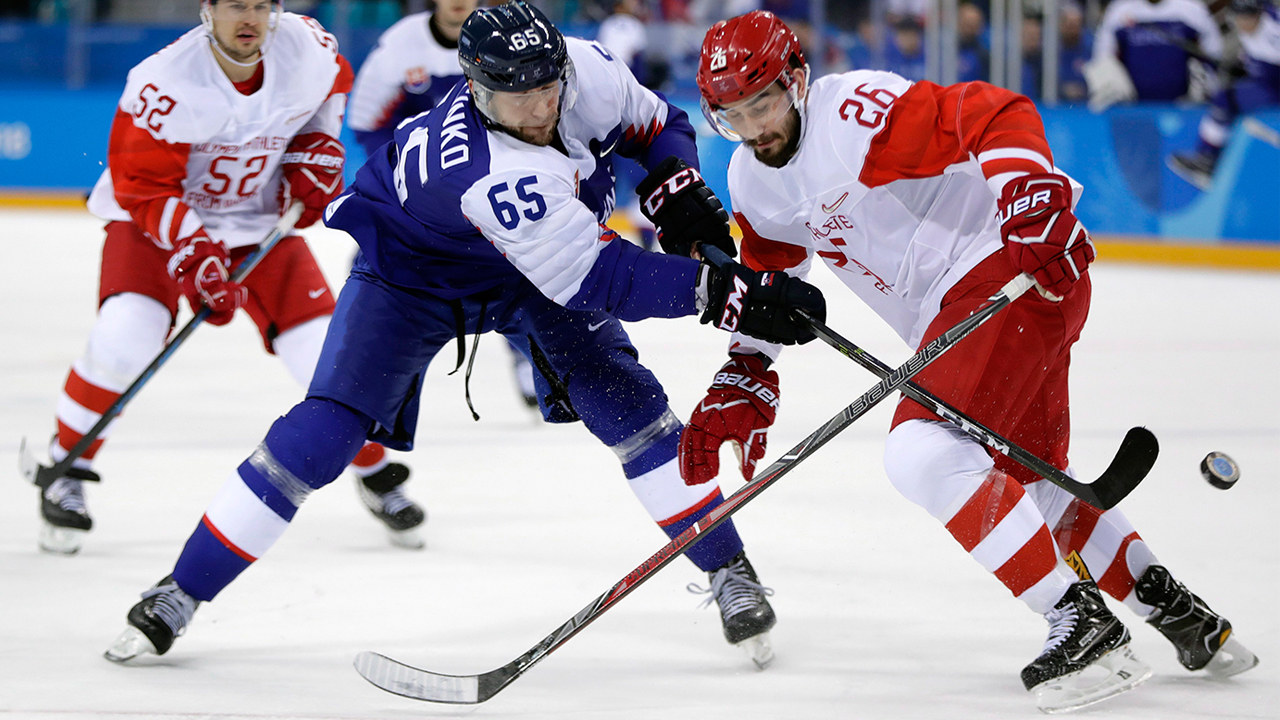The men’s and women’s hockey tournaments kicked off this week at the Olympic Winter Games from Pyeongchang, South Korea. As you know, there won’t be any NHLers on the men’s side for the first time since 1994. But even when the best players in the world were at the Olympics, the IIHF rulebook was used instead of the NHL’s.
There are quite a few differences between the two rulebooks, some of which are extremely minor (blade curve and length-of-stick rules aren’t the same, for example). But as you watch this year’s tournament, you should know about the biggest differences between the way the game is called in the NHL versus at international events. Here’s a quick rundown.
Goalie interference
The biggest controversies in the NHL this season have come around goalie interference and video reviews because there doesn’t seem to be any consistency from play to play. Recently, NHL commissioner Gary Bettman said he wanted only the “egregious” cases to overturn goals, which then gave us a wild Thursday night out of the all-star break where at least three “good goals” looked like they should have been overturned.
You probably won’t see that same controversy at the Olympics because the rules are totally different. In international hockey law, if a player enters the goal crease, play is whistled down and the faceoff comes outside the zone; the play is blown dead before there’s any chance of goalie interference leading to a goal.
Would this be a solution for the NHL? Sportsnet broadcaster Paul Romanuk made a case for it earlier this season.
Icing
The NHL made a change in its icing rule a few years ago to make it safer and to bring it more in line with what was being done internationally. The league changed from touch-up icing to hybrid icing where, instead of a player having to touch the puck to get a whistle, they just need to beat the competition to the end zone faceoff dot. It’s closer to the IIHF’s rulebook, but not quite the same.
The IIHF goes one step further in the direction of safety to the point where there is almost no race for the puck at all. If a puck is simply shot from the other side of the centre ice red line, all it needs to do is cross the goal line to be whistled for icing.
[relatedlinks]
Trapezoid
You know that annoying trapezoid behind each net on an NHL ice surface that restricts where a goaltender can play the puck from? It doesn’t exist on international ice.
We may be able to see wild goals come as a result of an aggressive goalie trying to play a puck towards the corner, or who stumbles as he tries to scramble back to the net from out far. At the Olympics, the goalies will be able to play the puck from anywhere behind the net, and you won’t see any lines behind the goal line.
Checking to the head
The head shot rule is also far more aggressive in international rules than it is in the NHL. In North America, a head check can come with a minor, major or match penalty/game misconduct options for the official, depending on the severity of the check.
Under IIHF rules, any minor penalty for checking to the head is also accompanied by a 10-minute misconduct, and every major penalty is accompanied by a game misconduct. Like the NHL, though, initial contact needs to be with the head for this penalty to be called — if a check makes first contact with the chest and slides up to the head, this penalty will not apply.
Fighting
Don’t expect to see any fights break out in the Olympic tournament.
The IIHF is much more strict on fighting than the NHL is. If you fight in the NHL you’ll have to sit for at least five minutes before being able to return, whereas in an international event you won’t be back in the game.
Anyone who participates in a fight under IIHF rules is assessed a match penalty and immediate ejection from the game. Also there is no tie-down rule in international games, so players don’t have to worry about an equipment malfunction leading to a misconduct.
Shootout
After the 2004-05 lockout, the NHL embraced the shootout and tacked it on to the end of any game still tied after five minutes of overtime to ensure there would be a winner for each contest. There continues to be no desire to put the shootout in the Stanley Cup Playoffs, though.
Under international hockey rules, the shootout has always been the ultimate decider and continues to be in 2018.
All round-robin games will feature a five-minute, three-on-three OT period before a shootout. All elimination games that are not the gold-medal game will have a 10-minute, four-on-four overtime preceding a shootout. But in that gold-medal game, teams will play a 20-minute, four-on-four frame before getting to a shootout. Here’s hoping this year’s gold isn’t decided via skills competition.
The other thing of note here is that, unlike in the NHL, after each team uses its first three shooters, anyone can shoot as many times as a coach wants. T.J. Oshie is the best example of this for what he did against Russia in the 2014 Olympics. Oshie was one of the first three shooters for the Americans (and scored) but the U.S. and Russia were tied 1-1 after those were done. Then, Oshie shot five more times before finally leading his team to victory and eliminating the home side.









